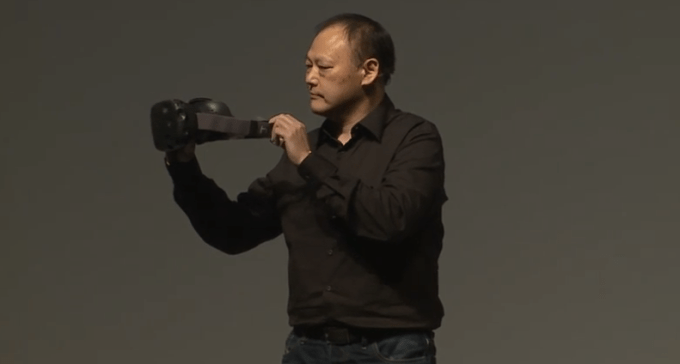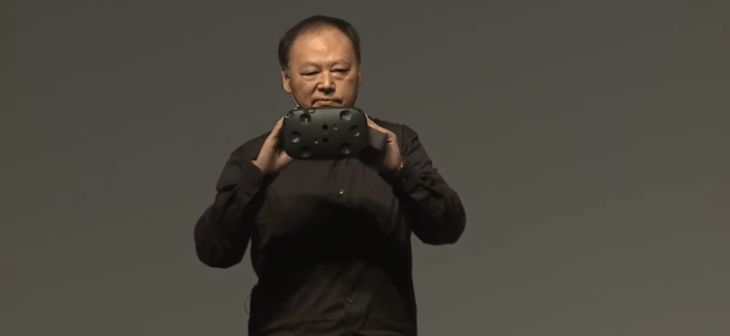HTC has just dropped another tidbit of news here in Barcelona, on the eve of the Mobile World Congress trade show. Namely that it’s gearing up to compete in the gaming wearable space, announcing a partnership with games publisher Valve to bring a virtual reality headset to market, called the HTC Vive — to compete with the likes of the Oculus Rift.
HTC said a consumer version of the Vive will be coming before the end of this year, with a dev edition landing this spring.
“In recent years we have seen the first forays into creating [virtual reality] experience. But no one has defined the ideal experience. Today we are ready to take you into that world — fully immersed. We will bring you a virtual reality experience no one has seen before, with a ground breaking partner – Valve,” said HTC CEO Peter Chou announcing the Vive on stage.
“We believe virtual reality will totally transform the way we interact with the world. It will become a mainstream experience for general consumers. The possibilities are limitless.”
The Vive will offer a “room-scale” VR experience, delivered via “over 70 sensors to provide full 360 room-scale tracking”. The refresh rate will be 90 Hertz — for what HTC said will be a “new benchmark for performance and comfort.” A.k.a. it won’t make you feel nauseous.
Wearers of the headset will be able to “explore objects from all angles looking up and down,” according to HTC — and “won’t just be able to look around but move around and interact much as you do in the real world,” using it in conjunction with a series of wireless controllers. The headset itself is described as lightweight to aid comfort.
Chou suggested the Vive will enable multiple types of VR experiences — such as viewing scenery, attending real-time concerts, watching films, 3D chat and even shopping.
Valve is a high-profile partnership win for HTC, given the brand’s cachet in the gaming space. The former had already been sniffing around VR, showing off a proof of concept headset last summer. It’s also been working on making a touchpad controller for its Steam platform — albeit that’s been long-delayed. Valve’s original announcement for the Steam controller was in fall 2013 but in May last year it said the release was delayed till 2015. Those delays may explain why it’s keen to partner with a seasoned hardware maker for a VR headset.
As well as working with Valve and its Steam platform, HTC also name-checked some initial content partners for the Vive — including HBO, Lionsgate Entertainment, Google and Taiwan’s National Palace Museum
“Working with these partners to deliver the world’s greatest VR experiences,” it said.
HTC will also be building tools to lets consumers create their own VR experiences using its forthcoming headset. It’s launched a website, HTCVR.com, where it said it will be sharing more details about the Vive.

Does the world need another face computer? HTC and Valve reckon so, albeit one that’s specifically targeted at gamers instead of — as in the spectacularly unfocused (puns intended) case of Google Glass — attempting to persuade general consumers that a pair of weird looking glasses with a camera on will bring benefits to their lives.
Where Glass’ hybrid hardware just makes normal people uneasy, the HTC-Valve love-in is taking inspiration from the (now Facebook-owned) Oculus Rift playbook of virtual reality headset reboots. Microsoft also recently outed an augmented reality headset it’s developing, called HoloLens — also intended for indoor and (mostly) gaming/entertainment-based usage.
Bottom line: alienating your immediate family with a weird looking face computer is borderline acceptable, especially if you’re doing it in your bedroom where your nearest and dearest are used to seeing you noodle around with gadgets.
Sony also recently tipped its hand on a pair of smart spec it’s building. Those SmartEyeGlass specs are closer in design to Google Glass than the gaming VR headsets we’re seeing line up elsewhere, although they do superimpose information right over the user’s entire field of vision.
